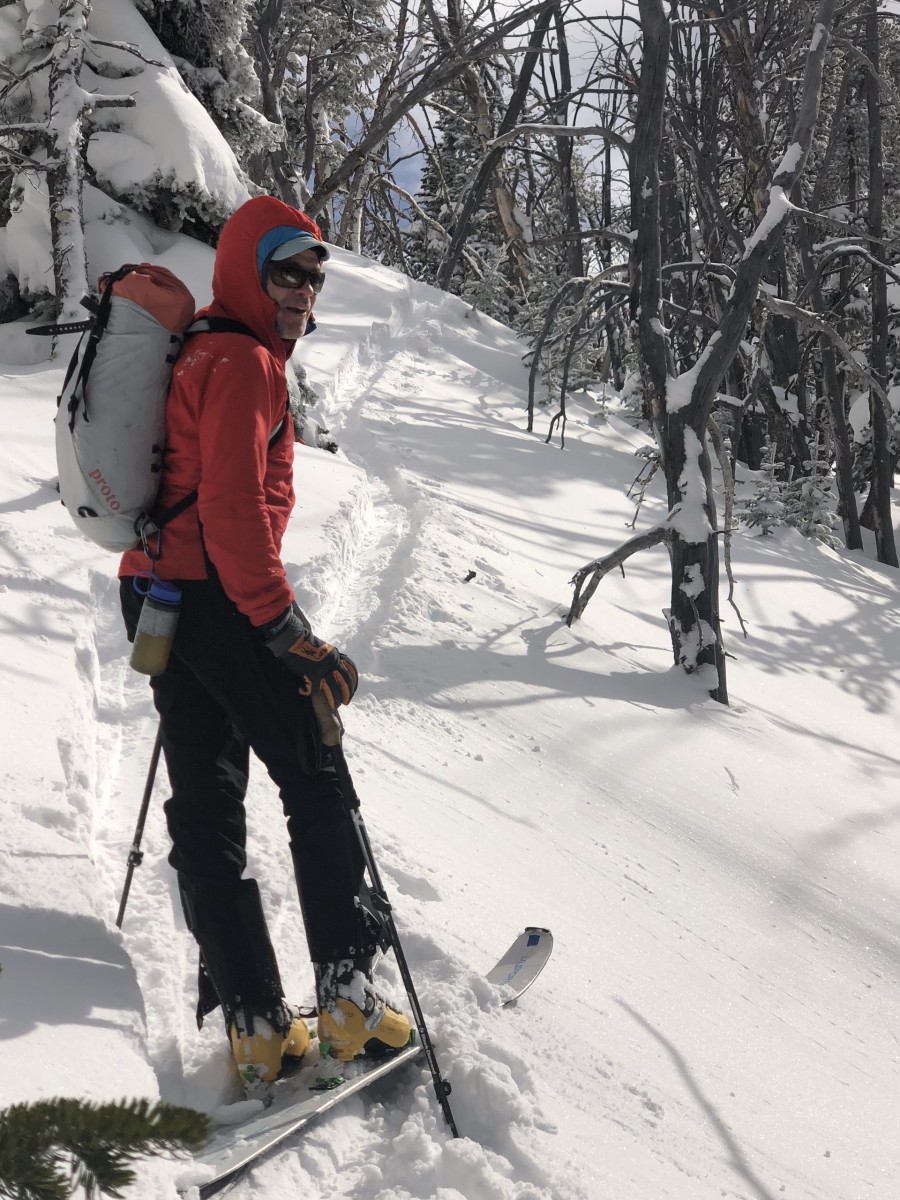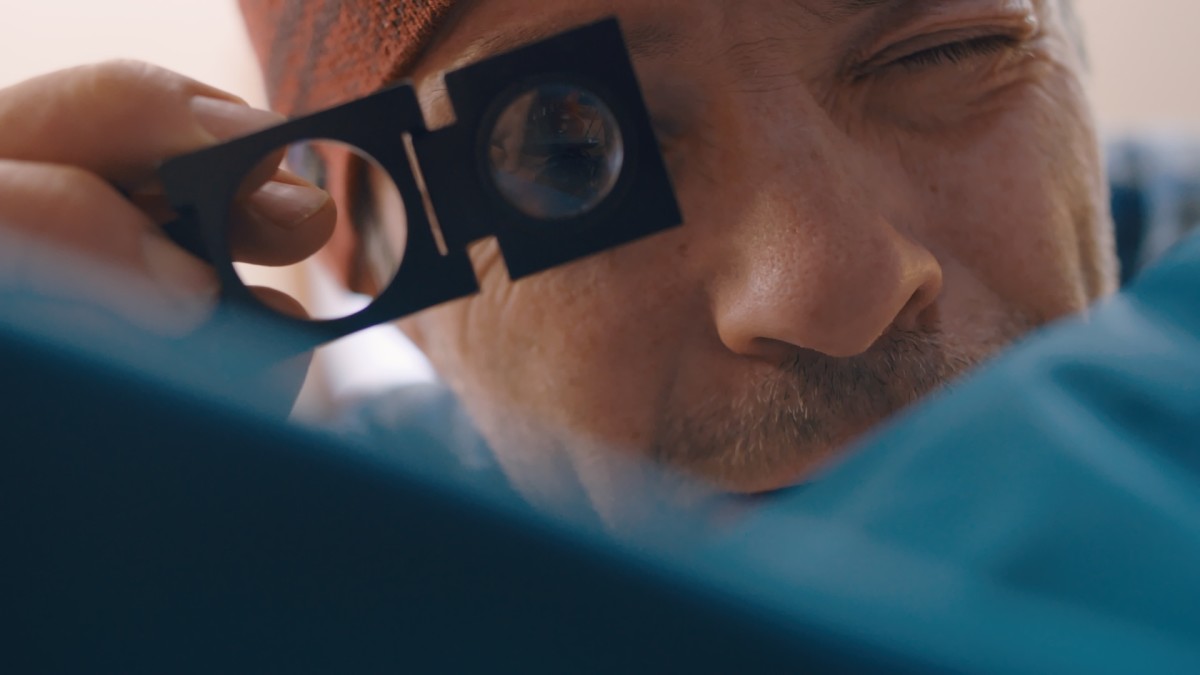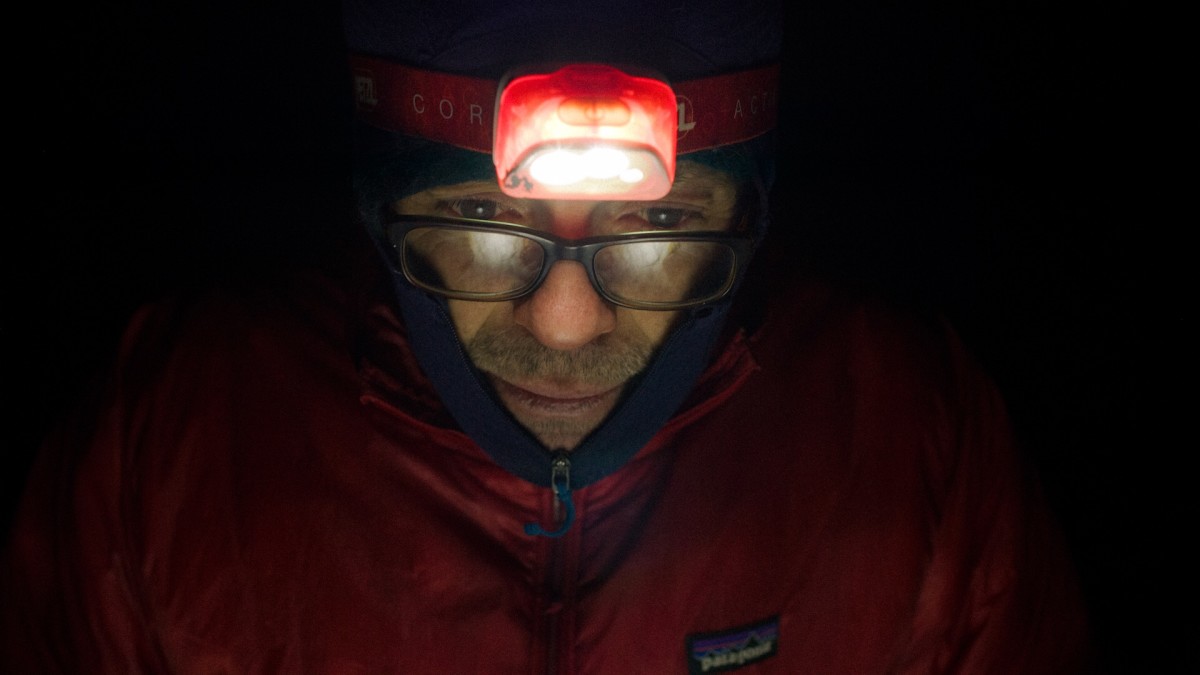Outdoor Gear Advice From Patagonia’s Master Tester Kelly Cordes
6 min readAt 51, with a fused ankle and a few fused vertebrae—after decades spent in the vertical—Kelly Cordes is still going strong. He knows what works in the mountains and why, and he applies these skills to his profession as a full-time gear tester for Patagonia. With every climb, every backcountry ski outing, every hike or scramble, he’s noting what works and doesn’t work with his clothing.
A legend in the climbing world, Cordes’s career includes the first ascent of the Azeem (Great) Ridge on Great Trango Tower in Pakistan with Josh Wharton in 2004, a 7,400-foot route that is more than twice the size of El Capitan and tops out over 20,000 feet.
It’s the “biggest alpine rock route in the world,” says Climbing Magazine.
For the difficult climb, they carried a single 28-pound pack stuffed with too little fuel and too little food. They had just enough gear to get them through to the end. By day they climbed hard and boldly. By night, with all their layers on, they each found a rocky nook and crawled into their summer-weight sleeping bags. They didn’t carry a tent or even bivy sacks to keep out the elements. As the stars shined over the Karakoram mountains, they closed their eyes and exhaled into the tops of their clothing to keep hypothermia at bay.
He reflects on the Great Trango climb in his 2016 New York Times article, The Pleasure and the Pain of the Climbing Life.
To succeed, the two climbed in “disaster style,” a term Cordes and his climbing partners came up with 20 years ago while he was living in a 7-by-11-foot “chicken coop” in Estes Park, Colorado.
“Disaster style, it’s a philosophy of life and how you interact with the world, not cowering in fear and throwing yourself out there. It means being willing to take a significant risk,” Cordes says today from his 560-square foot home in Estes Park, overlooking Rocky Mountain National Park (RMNP). “It sounds haphazard, but it comes from a place of personal importance and things I take a stand about.”

His house may be a mess but knows where his priorities stand: making the perfect margarita, writing, climbing hard, whether it be on rock, ice, or a bit of both, and using the right gear. That’s why he’s “the world’s best gear tester,” Patagonia says in its tongue-in-cheek video of him in On the Brink, where Cordes takes his outerwear and personal discomfort to the limit.
Just as Cordes takes gear reviews seriously, he also carefully considers everything he brings to the mountains. He also knows where to save money—using $20 gloves instead of $100 ones and he knows when to spend money on virtually indestructible gear. This includes the Metolius Safe Tech Comp harness, at $119, about twice of many others, but it is reinforced and stands up to abuse in the alpine.

Cordes follows the same philosophy used by legendary climbers Yvon Chouinard and Renan Ozturk; this saying by Antoine de Saint-Exupéry: “Perfection is achieved, not when there is nothing more to add, but when there is nothing left to take away.”
Here’s what the Cordes—the master gear tester—looks for:
-
How he keeps his hands warm
“Gloves are the last great problem of the alpine kit,” Cordes says. Where his peers often carry three pairs up a route—lead pair, backup pair for when they get wet, belay pair, he often brings one pair. “Gloves are tricky with ice climbing because they get wet, but you need dexterity and warmth,” he says.
Instead of gloves by Black Diamond or Arc’teryx, Cordes carries a single pair of $20 Japanese fishing ones called the Showa Best 282 Atlas TEMRES Insulated Gloves. They’re built with micro-ventilated polyurethane and acrylic insulation with an anti-perspirant coating. They’re warm, they breathe, and are dexterous enough so that Cordes doesn’t over-grip his ice tools. He modifies the cuff to give them a snow skirt and clip-in point. He does this by cutting off the opening-end of a stuff sack and sewing that on. This allows him to adjust closure at the wrist with the grommet. He also sews on a Velcro patch to adjust the fit. “These are the only pair I wear all day. These gloves are the best,” he continues. They have phenomenal dexterity and they’re warm.”
This product comes with a warning from California stating health/cancer risks.
-
What he skips
Making one layer work for many applications is crucial for Cordes during his climbs. Just how he goes from three pairs of gloves to one, he does the same by making an active insulation jacket his primary top layer. While climbing, he wears the half-zip Patagonia Nano Air Light jacket that’s part of the High Alpine Kit. To keep the heat in when belaying, over top he layers that with the 3-ounce Houdini windbreaker.
More time on route means more exposure to the elements and a greater chance of being caught by a storm. But between carrying only the necessities, he saves time and energy. “It’s the difference between being benighted or being back at the beer cooler.”
-
What he splurges on
When it comes to first ascents, like Cordes and partner Kevin Cooper’s “Cannonball” on 14,295-foot Longs Peak in RMNP—300 feet of 1- to 2-inch thick ice located hours deep in the backcountry—Cordes needs to be fit. For approaches requiring post-holing through waist-deep snow, crawling over boulders and shimmying through tight spaces, he hikes or ski tours several hours a day. “I get out as often as I can,” he says. “It’s required that I get out; this gear isn’t going to test itself.”
When it comes to sneakers, he chooses comfort over minimalist. “Hokas rule for an old guy with a worn-out body,” he says of the maximum cushioning Hoka One One shoes.

-
Creature comforts
To get electrolytes and hydrate in the mountains, some climbers use hot powdered drink mixes. Cordes brings bouillon cubes.
“In your thermos, rather than something wimpy like tea, go with a bouillon cube. I like veggie, and I drop it in with my hot water, and with all the salt and flavor, I feel like I’m drinking a hearty stew, even in subzero temps.”
-
The more you know, the less you need
Cordes loves to nitpick about three things: his writing (he’ll fight over whether to cut or keep a comma); what to bring in the mountains; and, how to make a great margarita. For gear, “I look for equipment from established companies with good reputations, things that have been around and proven themselves. I rely a lot on my friends’ opinions, too, because most of them are more dialed than I am.”
For his drinks, he chooses the tried and true over the pre-packaged: fresh lime squeezed over ice, and 100 percent agave tequila, “the good stuff,” he says.
The same is true for what he carries in the vertical. “There are no shortcuts to knowledge and experience. And you learn to get by with a little less, to be more routine and not bring needless stuff.”
“After a while, ‘light is right’ becomes a philosophy,” he says.
In addition to his work as a professional gear tester, Cordes is also an award-winning author. Since April 1, he’s been releasing (for free) daily readings of his book The Tower: A Chronicle of Climbing and Controversy on Cerro Torre. Visit his website to hear Cordes read, complete with ice clinking in his margarita glass in the background.
For access to exclusive gear videos, celebrity interviews, and more, subscribe on YouTube!






